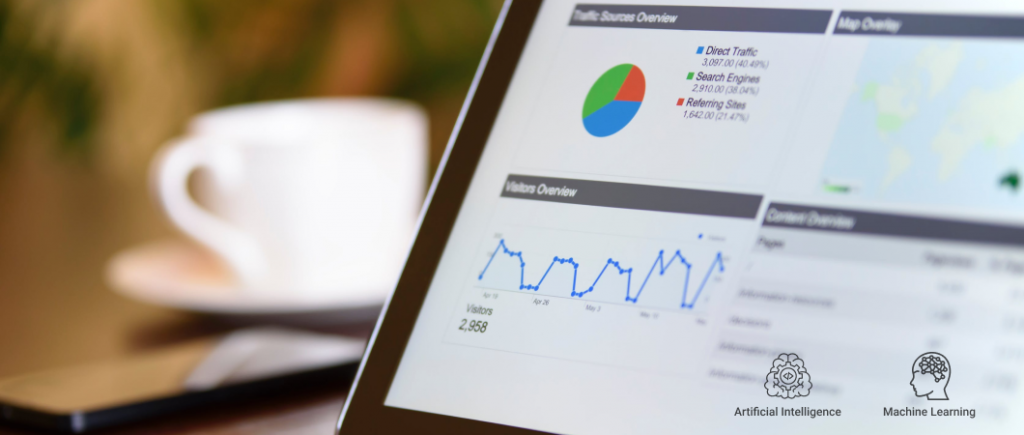Last updated on November 28th, 2022
These days it seems that testers and QA Engineers are forced to confront a host of new challenges, with solutions lacking or hard to implement. With the demand for new features and code changes being continuously incorporated, the code becomes increasingly weak. Teams risk releasing a sub-optimal or non-functional product. Therefore, each time the development team works on existing code, new tests have to be carried out to ensure the code is not on the verge of breaking.
Traditional approaches to testing can overwhelm QA engineers. Manually checking if each change is working individually, and together as part of the overall project is surely cumbersome. The more complex an application becomes, the more challenging it is to test it end-to-end. And with users becoming increasingly impatient, manual testing cannot keep up with their demands.
The benefits of AI and ML-enabled Software testing:
- The AI and ML-powered approach to Software testing can allow teams to overcome some key challenges of traditional testing. By teaching systems to learn while they carry out testing, and that apply acquired testing knowledge in the future, AI and ML can not only quicken the testing process but also make it more precise and accurate.
- With the ability to learn without human intervention or complex programming, AI-powered testing systems improve with experience. They automatically access data, run tests and learn from results, and improve the quality of the tests by learning patterns and predicting problems. Let’s look at how AI and ML can accelerate the Software testing process.
- Traditional modes of testing require testers to manually test each line of code, often taking days or even weeks to test an entire product. As more and more changes are incorporated, test suites have to be constantly updated. AI-enabled testing systems can automatically run scripts and analyze large amounts of data – accelerating the testing speed. Since AI can sort through large amounts of log files, it saves time and enhances the accuracy of the effort tremendously.
- as Software products become more and more complex, testing them also becomes more labor-intensive and more expensive. AI and ML-powered testing systems are built to evolve with time. Since the systems are not fully encoded, they adapt and learn to find new application functions themselves. Every change or modification of the code could be automatically analyzed to see if the change is new functionality or a defect.
- Despite all the efforts QA engineers put into the testing process, there are occasions where bugs go unnoticed. Such bugs can impact the performance of the product, and in the long run, also cost a lot of money. AI and ML can test products end-to-end and find answers to pressing questions in a matter of seconds. Since every line of code is tested thoroughly, they ensure no bug ever goes unnoticed. They also suggest whether coding changes are required to prevent program errors, or teams simply need to apply some other approaches.
- Often, due to the complex nature of a Software product, testers do not know which tests to run, how frequently to run them, and what bugs to check for. They end up running all tests – which is extremely time-consuming. AI-enabled test systems can review the current state of test status, recent code changes, and other metrics, and then prioritize the tests to run and determine when to run them. By making important decisions based on ever-changing data, AI and ML can effectively replace the developer/ tester in this decision-making process and accelerate testing results.
The challenges they present:
- While it’s clear that Software testing that can benefit from AI and ML – including in code optimization, bug fixing, and test automation, the challenges of AI/ML implementation in testing cannot be overlooked.
- In contrast to deterministic testing that humans have been performing for ages, AI systems can end up doing limitless testing which can lead to a number of challenges. These range from exhaustive testing, identification of very low priority or duplicate defects to testing areas of the Software that needn’t be tested. For AI and ML-enabled testing systems to really work, they should be trained in a way that they replicate human behavior, and test only the right aspects -as a human tester would.
- Another challenge with AI and ML testing is data privacy. If AI systems are exposed to observing live user-behavior including payment details and individual choices, data privacy issues can emerge that need to be handled in the right manner. To safeguard data privacy, restrictions must be put on AI and ML-enabled systems. Separate test environments need to be created so the systems do not expose or misuse user data.
- With so many apprehensions around AI and ML technology in general, there is also the challenge of acceptance of the results presented by an AI system. For humans to have faith in the results generated by AI and ML-based testing systems, a change in mindset is needed. It is important for development teams to understand the benefits of AI in testing, and use them in an ethical way to limit bias and improve testing outcomes.
Improve time-to-Market:
With AI and ML disrupting every industry, Software testing can’t be an exception. Offering the ability to optimize code, detect bugs sooner, and improve the overall quality of Software products, AI and ML can definitely accelerate the process of Software testing.
By creating more advanced tests, recognizing patterns, and creating comprehensive data models of observed parameters, AI and ML allow testing teams to create more advanced automated test scenarios that are reusable, scalable and resilient to change.
At the same time, they also pose the challenge of over-exhaustive testing, data privacy, and human resistance. By putting the right restrictions, and training AI/ML systems to replicate human behavior, QA engineers can identify the flaws and fix code errors more efficiently and deliver high-quality products sooner. It’s complex, but it’s clear that it must be done!



